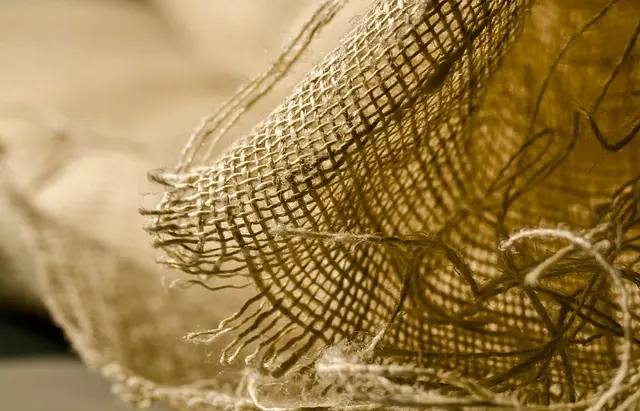Kratom, a plant from Southeast Asia (Mitragyna speciosa), is known for its alkaloid profile that influences a spectrum of physiological and psychological effects. Among the various strains, Yellow Vein Kratom is unique due to a specialized drying process involving sun exposure, which affects its alkaloid concentration and user experience. The environmental conditions in countries like Indonesia, Thailand, and Malaysia, where kratom naturally thrives, play a crucial role in determining the plant's potency and effects. This strain is prized for its balanced properties that offer both a stimulating energy boost and calming sensations without intense sedation. Its harmonious blend of effects makes it a popular choice for those seeking an uplifting, euphoric experience tailored to different preferences and needs. The distinct profile of Yellow Vein Kratom is attributed to its native ecosystem, which influences its characteristics and efficacy, particularly highlighting the importance of terroir in preserving its unique qualities. Traditional organic farming practices enhance the purity of this strain, ensuring it remains a sought-after product on the global market. Understanding where kratom grows, including the soil and climate conditions, is key to comprehending the variations and potential applications of this complex plant.
Discover the unique properties of Yellow Vein Kratom Powder, a botanical extract with a rich heritage deeply rooted in Southeast Asia’s lush landscapes. This article delves into the origins and effects of this specialized kratom strain, exploring how its distinct color is influenced by the intricate interplay between climate, soil composition, and regional geography—key factors that contribute to its cultivation, as detailed by experts on where does kratom grow. We will unveil the characteristics that set Yellow Vein Kratom apart, shedding light on its potential benefits and uses, making it a subject of intrigue and interest for those curious about its distinctive nature.
- Unraveling the Secrets of Yellow Vein Kratom Powder: A Glimpse into Its Origins and Effects
- The Cultivation of Yellow Vein Kratom: Climate, Soil, and the Geography of Growth
- Understanding Yellow Vein Kratom's Distinctive Characteristics and Uses
Unraveling the Secrets of Yellow Vein Kratom Powder: A Glimpse into Its Origins and Effects

Kratom, a tropical tree native to Southeast Asia, has garnered global attention due to its unique alkaloid profile and varied effects on the human body. The leaves of this Mitragyna speciosa plant contain compounds that can influence mood, pain perception, and energy levels. Among the many strains of kratom, Yellow Vein Kratom stands out for its distinct origins and effects. Unlike its more common red and green vein counterparts, yellow vein kratom is a result of a specialized drying process, where leaves are allowed to wilt in the sun before being processed indoors. This unique method of processing contributes to the alkaloid concentration and, consequently, the effects one might experience.
The geographical location where does kratom grow plays a crucial role in the characteristics of Yellow Vein Kratom. The specific climate and soil conditions of regions like Indonesia, Thailand, and Malaysia are conducive to growing kratom with optimal alkaloid content. These environmental factors influence the alkaloid profile, which is believed to affect the coloration and the resulting effects of the dried leaves. Yellow vein kratom is often associated with a balanced blend of stimulating and sedating properties, providing users with an energetic lift while also promoting a sense of calm and well-being. It is this balance that makes yellow vein kratom a popular choice among individuals seeking a moderate experience. The effects are typically reported to be uplifting and euphoric without the overwhelming sedation associated with some strains, making it a versatile option for many users.
The Cultivation of Yellow Vein Kratom: Climate, Soil, and the Geography of Growth

Kratom (Mitragyna speciosa), a plant native to Southeast Asia, is celebrated for its varied alkaloid profile that offers a spectrum of effects. The specific strain known as Yellow Vein Kratom is derived from leaves that have undergone a unique drying process, which differentiates it from the more commonly recognized Red and White Vein strains. The cultivation of this unique variant is closely tied to the region’s climate, soil composition, and geographical conditions.
Yellow Vein Kratom is primarily found in the dense forests of Thailand, Indonesia, and Malaysia, where the climate is tropical with high humidity and consistent rainfall. This environment replicates its natural habitat, allowing the plant to thrive. The rich, fertile soil in these regions plays a pivotal role in the growth and alkaloid content of the Kratom leaves. The soil’s composition directly influences the potency and balance of the active compounds within the plant, contributing to the distinctive characteristics of Yellow Vein Kratom. Farmers in these areas employ traditional farming methods, often without the use of synthetic fertilizers or pesticides, which further preserves the purity and quality of the harvested leaves. The careful selection of regions with optimal conditions for cultivation ensures that Yellow Vein Kratom maintains its reputation for providing a balanced and unique experience for consumers, making it a sought-after strain in the global market. Where does Kratom grow? It is clear that this plant thrives in specific Southeast Asian environments where the climate and soil contribute to its distinctive properties. Understanding these factors is crucial for the production of high-quality Yellow Vein Kratom.
Understanding Yellow Vein Kratom's Distinctive Characteristics and Uses

Kratom (Mitragyna speciosa), a plant native to Southeast Asia, has gained international attention for its alkaloid profile and a wide range of potential uses. Among the various strains of kratom, Yellow Vein Kratom stands out due to its unique characteristics and effects, which are distinct from those of the more commonly known Red or Green Vein varieties. The yellow-veined strain is derived from leaves that have been exposed to sunlight on one side and shade on the other, creating a distinctive alkaloid composition through a process often referred to as “flushing.” This bifurcated exposure results in a unique balance of mitraphylline and 7-hydroxymitragynine, which are believed to contribute to its effects.
Yellow Vein Kratom is prized for its balancing properties, offering users a moderating influence on the stimulating and sedating effects associated with other kratom strains. Its alkaloid profile is thought to provide pain relief, mood enhancement, and a sense of well-being without the intense energy of certain strains or the heavy sedation of others. The distinct characteristics of Yellow Vein Kratom make it a versatile option for those seeking to manage various aspects of their health naturally. Where does kratom grow? Kratom trees thrive in their natural habitat within the countries of Thailand, Indonesia, Malaysia, and Papua New Guinea, where the specific conditions of soil, climate, and humidity contribute to the variations in kratom’s vein colors and effects. Understanding the origins and cultivation practices of kratom is crucial for appreciating the nuances that affect its alkaloid content and subsequent uses.
Yellow Vein Kratom Powder, a unique variant of Mitragyna speciosa, holds a place of interest within the broader context of kratom botanicals. Its origins and effects have been thoroughly explored, revealing insights into its cultivation and the distinctive characteristics that set it apart. As discussed, the specific climatic conditions and soil composition in certain regions, particularly where Kratom grows naturally, play a pivotal role in shaping the alkaloid profiles and subsequent effects of Yellow Vein Kratom. This article sheds light on the meticulous processes behind its cultivation and the potential benefits it offers. For those intrigued by the diverse world of kratom, understanding the nuances of Yellow Vein Kratom is crucial for making informed decisions about its use.






